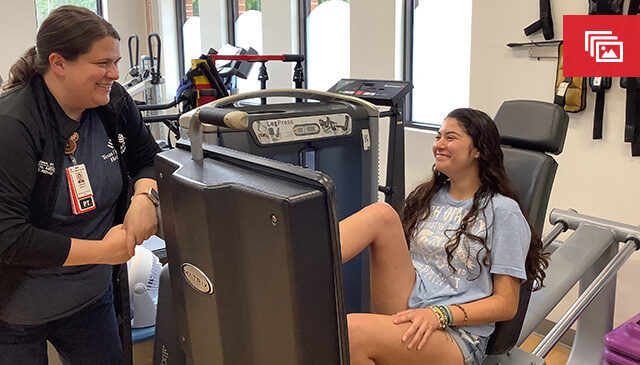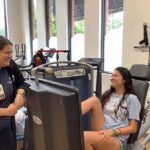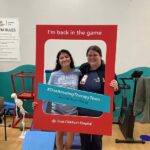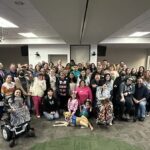
As a traveling physical therapist, Cassie Jones treated patients at organizations around the country. Once she stepped foot in Texas Children’s, it didn’t take long for her to fall in love with her co-workers, patients and the organization itself. As she put it, she couldn’t leave, and has now been with us for 11 years as a pediatric pain physical therapist, currently practicing at Clear Lake Specialty Care.
“I’ve worked at a lot of great facilities, but I really found a home at Texas Children’s,” said Cassie. “As a top pediatric hospital, we have kids come from everywhere with some of the rarest and most complex conditions. Some patients have the only documented case of their condition, so we all have to be at the top of our game to work together and develop the best treatment plans for them.”
Studies show up to one-third of children suffer from chronic pain, yet physical therapists treating chronic pain are very rare. The robust Pain Medicine program at Texas Children’s with dedicated physical therapists at many locations makes us a destination for these patients. The restorative model at Texas Children’s features a team comprised of a pain physical therapist, pain psychologist and physician prioritizing therapy over medication.
One of Cassie’s biggest success stories involves 16-year-old patient Joscey. She had ankle sprains, a tendon repair and multiple surgeries as a result from basketball injuries. She failed four courses of traditional PT focused on sports or traditional concepts. By the time she came to Cassie, she had quit in-person school and attended school online. She gave up the sport she loved and could no longer spend time with her twin sister at the movies or shopping. Her family is avid vacationers, hikers and she was not doing any of that with them. She lost herself and said her identity was gone.
Fast-forward to a year later and she is working to return to school in the fall. She plays basketball on a daily basis and is back to fun outings with her twin. She even went on a three-week vacation with her family hiking in Utah.
Recently, the department held a patient community day in partnership with the U.S. Pain Foundation, inviting current patients from around the system and their families, giving them a chance to get together and meet others going through the similar challenges. Joscey told her inspiring story and several attendees said she was the first person that gave them hope to overcome this.
Many kids dealing with chronic pain are completely isolated from the outside world and have little to no social interaction, which can add to their anxiety, fear and loneliness.
“Community day was more beneficial than we could have hoped for,” Cassie said. “Our patients met others going through the same thing and they instantly became friends. They exchanged phone numbers and Instagram handles. One Mom told me her daughter has social anxiety and hadn’t spoken to another kid in years as she watched her talk with a group of girls. It was amazing. We all cried a lot that day.”
Not all patients see instant success like Joscey, and some go through years of physical therapy. Cassie explained every patient is different, but their team works together to develop treatment plans for each individual. They will never give up finding ways to help these patients deal with their pain.
“Treatment for chronic pain can change someone’s life. It’s more than just getting them back to playing a sport, which is wonderful, but we’re privileged to have the opportunity to turn someone’s life around, and there’s nothing more rewarding.”




